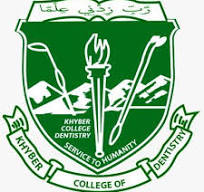FREQUENCY AND COMMON PATTERNS OF MANDIBULAR FRACTURE: A CROSS-SECTIONAL STUDY AT TERTIARY CARE HOSPITAL AT PESHAWAR.
DOI:
https://doi.org/10.33279/jkcd.v8i01.459Keywords:
Pattern, mandible fracture, trauma, PeshawarAbstract
Objective:To determine the frequency and pattern of mandible fractures in acute trauma patients.
Materials and methods:A cross-sectional was conducted at Oral & maxillofacial surgery Department Hayatabad Medical Complex and Akbar Medical centre Peshawar from April 29th, 2015 to October 28th, 2015 by non-probability convenient sampling. Acute trauma Patients of adult age group with age 19-60 years were included in the study while patients with isolated cases of dentoalveolar, pathological fracture, and iatrogenic fractures were excluded from this study. SPSS version 19 was used for analysing the data.
Results:A total of 168 patients with mandibular fractures were included in the study. Male patients n= 125(69.4%) were more as compared to female n=43(28.6%), and the overall mean age was 29.71 ± 9.55 years. Most of the patients were from age group A(19-40 years) n=147(87.5%). The most common site was body fracture n=57(33.93%) followed in frequency by condylar fractures n=46(27.38%), angle n= 29(17.26%) and parasymphysis n=22(13.09%).The parasymphyseal fracture was more common in
older age group (41-60 years).
Conclusion:Mandibular fractures are the fairly common site of injury in severe trauma. The main victims of this kind of trauma are involvement of young males. There is an abundance of mandibular body fractures which are followed by fractures of the angle and the condyle. Symphyseal and parasymphyseal fractures are the rare one.
Downloads
Published
How to Cite
Issue
Section
License
Copyright (c) 2018 Muhammad Mushtaq, Saima Gul, Yasir Rehman Khattak

This work is licensed under a Creative Commons Attribution-NonCommercial-NoDerivatives 4.0 International License.
You are free to:
- Share — copy and redistribute the material in any medium or format
- Adapt — remix, transform, and build upon the material
- The licensor cannot revoke these freedoms as long as you follow the license terms.
Under the following terms:
- Attribution — You must give appropriate credit , provide a link to the license, and indicate if changes were made . You may do so in any reasonable manner, but not in any way that suggests the licensor endorses you or your use.
- NonCommercial — You may not use the material for commercial purposes .
- No additional restrictions — You may not apply legal terms or technological measures that legally restrict others from doing anything the license permits.









